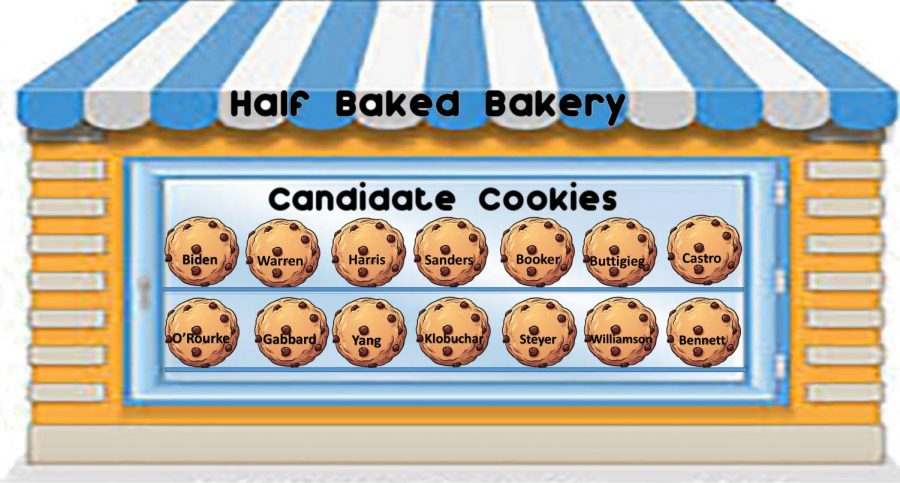OPINION OF THE STAFF: Too Much of a Good Thing — The Overabundance of candidates
September 30, 2019
A full cookie jar sits in front of you. Chocolate chip, oatmeal raisin, snickerdoodle, and more fill it to the top. The plethora of choices might seem overwhelming — well, maybe not the oatmeal raisin. No one really likes oatmeal raisin. But even if you liked all the other cookies, everyone has their limit! And how can one choose the best, when they can barely get a taste of all the possibilities? So it is in politics. Though it’s nice to have a choice, how can one decide which “cookie” is ultimately the best?
Some folks like having a large field of candidates. It forces all of the candidates to appeal to a variety of constituents and address an assortment of issues. But at a certain point, is it possible to have too much of a good thing? At the start of the 2020 race, there were 27 declared Democratic candidates. You read that correctly: 27. Of course, seven have since dropped out, leaving the field with a manageable 20 candidates. In 2016, the Republicans had 17 major candidates file with the Federal Election Commission. So, is this a case of quantity versus quality? Is it just possible, that with so many candidates to sift through, like the kid who ate too many cookies, voters may, indeed, end up with nothing but a bellyache in the end?
The more ideas, the better. This is the ideal mindset that people should adopt when facing the 2020 election. Having a variety of voices can prove to be positive for the public as many views were represented. But it can also be a distraction. The Democratic debate held on October 15, which featured the top twelve highest polling candidates, ran three hours in length. According to Weiyi Cai, Jasmine C. Lee and Jugal K. Patel of The New York Times, the speaker who had the longest amount of speaking time, Elizabeth Warren, had 22.47 minutes to provide answers on topics including Middle East policy, income inequality, health care, gun control, and the economy … or roughly two and a half minutes to state her case on each topic! And she got to speak the most! The average speaking time for all the speakers at the debate was about fourteen minutes apiece. What can one possibly learn about a candidate’s position in fourteen minutes? And that doesn’t take into account the amount of time spent on name-calling, finger-pointing and accusation-making.
So, at the risk of sounding like a conspiracy theorist, given the meddling by foreign powers in previous elections, is it possible that this new trend of double-digit candidacies is just a smoke screen, deliberately aimed at confusing voters who, after a while, can’t tell one cookie from another? Is it possible that an abundance of candidates in the field just serves to distract and fatigue voters until they choose the one who is the most entertaining? In this current system, it’s very difficult for Americans to accurately assess who the most viable candidate will be.
Lilly Kofler, who’s U.S. Director of Behavioral Science at Hill+Knowlton Strategies in New York, stated in an article published by Politico, “It might seem like a good thing to have a cereal aisle’s worth of candidates to choose from, but behavioral science predicts that too many options will, counter-intuitively, result in lower satisfaction among voters — and possibly lead to lower enthusiasm and lower turnout.”
Just like the cookies in the jar, political candidates are better when one can get a taste of what they stand for, making people enjoy their flavor. Those who resist a large pool of candidates are not looking at each candidate for what they individually bring to the table. If the electorate never gets a chance to actually hear more than a few sound-bites, then do they really know what their getting? After all, you need more than a few bites to judge a cookie’s flavor. And if you end up ultimately choosing one that isn’t terribly satisfying, well then, that’s just the way the cookie crumbles!




